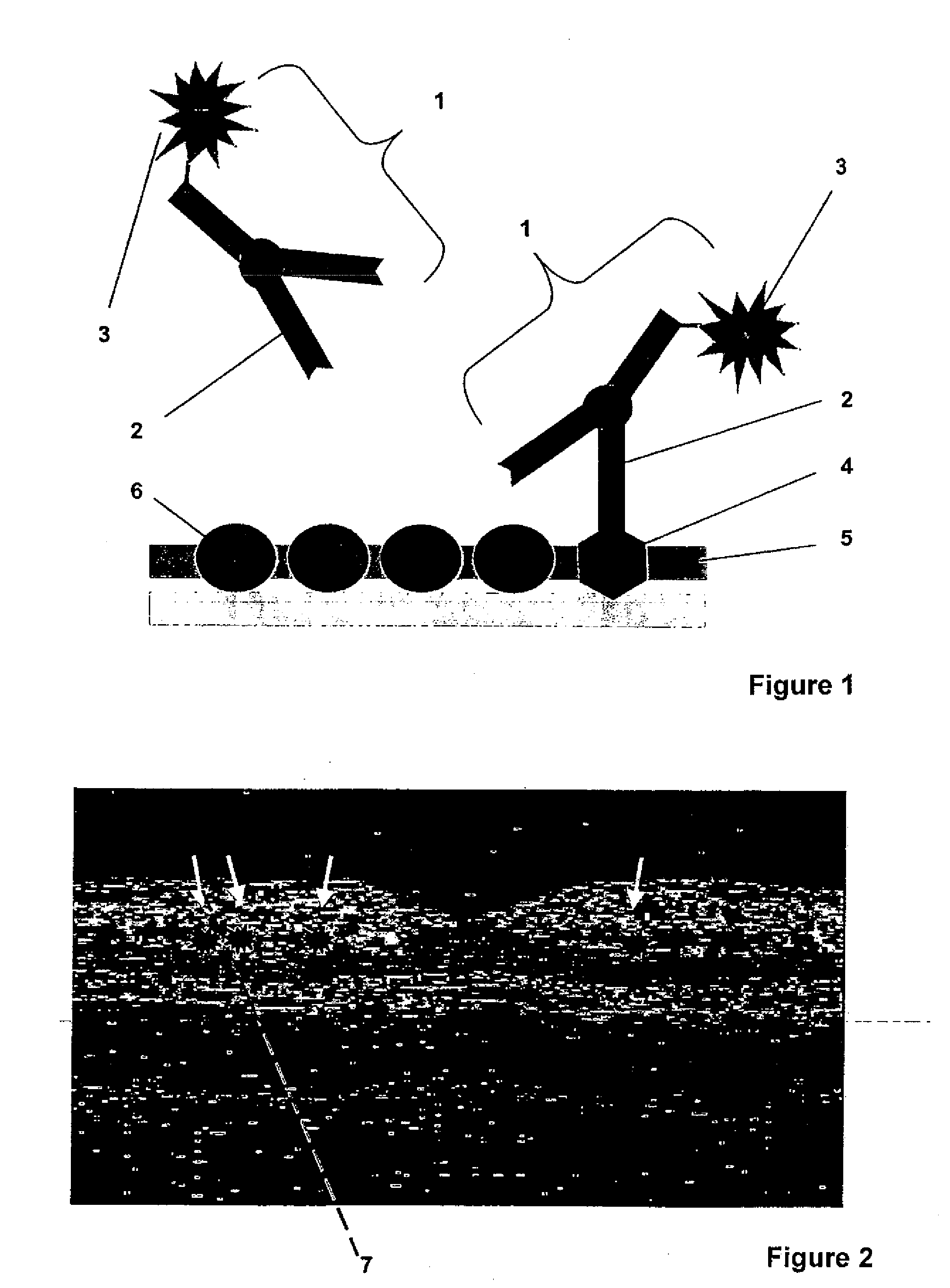Method and device for optical detection of the eye
a technology of optical detection and eye, applied in the field of optical detection of eyes, can solve the problems of only visible disease-relevant changes in an oct image, many phenomena of icg angiography are still not quite understood, and achieve the effect of improving optical contrast and high transparency of optical system
- Summary
- Abstract
- Description
- Claims
- Application Information
AI Technical Summary
Benefits of technology
Problems solved by technology
Method used
Image
Examples
Embodiment Construction
[0061]In the method for optical detection of changes of the eye, according to the invention, a molecular marker with spectral characteristics of absorption and / or dispersion in the visual and infrared spectral region or of fluorescence or luminescence is introduced into the eye and bound to a specific target. The interaction between the molecular marker and the target is detected by means of optical imaging methods. Since the molecular, physiologically compatible marker exhibits the characteristics of a temporally limited, selective binding to the targets in the eye with subsequent internal degradation in the body without noticeable impairment of the vision of the patient, only a slight strain to the patient and, particularly, the eye is achieved, which is adequate for diagnostic purposes.
[0062]The molecular marker, functioning as diagnostic reagent, can be injected in the patient, applied orally, or administered as eye drops. After the time period T0, when the molecular marker has ...
PUM
| Property | Measurement | Unit |
|---|---|---|
| wavelengths | aaaaa | aaaaa |
| wavelength | aaaaa | aaaaa |
| wavelength | aaaaa | aaaaa |
Abstract
Description
Claims
Application Information
 Login to View More
Login to View More - R&D
- Intellectual Property
- Life Sciences
- Materials
- Tech Scout
- Unparalleled Data Quality
- Higher Quality Content
- 60% Fewer Hallucinations
Browse by: Latest US Patents, China's latest patents, Technical Efficacy Thesaurus, Application Domain, Technology Topic, Popular Technical Reports.
© 2025 PatSnap. All rights reserved.Legal|Privacy policy|Modern Slavery Act Transparency Statement|Sitemap|About US| Contact US: help@patsnap.com



